The EM-2 was the result of a British research and development program looking for a replacement for the venerable Lee Enfield rifle after WWII. As with just about every other country on the planet, they were largely influenced by the German Sturmgewehr, and the program was built around the .280 Enfield cartridge. This was a good intermediate-power cartridge, firing a 140 grain bullet at about 2450fps – slightly more potent than the Soviet 7.62×39 and the “new” 6.8 Remington SPC.
The EM-2 used a long-stroke gas piston mounted above the barrel, and a locking system similar to the German G41 and G43/K43 selfloading rifles. Two flaps were mounted in the bolt carrier, and would pivot out to engage locking recesses in the receiver when in battery. The system was a bit complex, but effective and well sealed against dirt and dust.
Disassembly was simple enough, as the buttplate could be rotated up and removed, allowing the recoil spring, piston, and bolt carrier to slide out the back of the receiver. The safety was located in the front of the trigger guard much like the M1/M14 rifles, and the magazines were of the “rock-n-lock” variety, with an AK-like latch at the back of the magwell. The optical sight was fixed; zeroing was done with screw adjustments on the front of the carry handle.
The EM-2 was chosen over the EM-1 rifle as an standard service rifle as the No9 Mk1 rifle in 1951. Before it could be put into serious production, though, the government decided to indulge the US and adopt the new 7.62×51 cartridge instead (thus paving the way for the L1A1 rifle). A few decades later they would return to the bullpup configuration with the L85 rifle (which bears no mechanical similarity to the EM2 except gross configuration).
Videos
Manuals
I managed to skip a couple pages when I scanned this, but better to have most of it available than none, so here it is (less pages 4/5, 22/23, and 28/29). The full material is available in Dugelby’s book, although it is out of print and difficult and pricey to find.
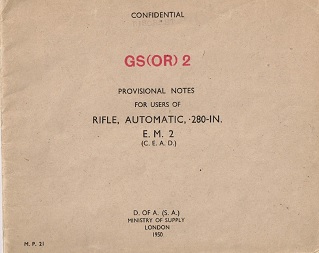
Photos








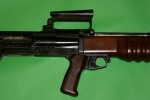




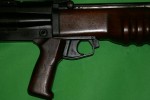



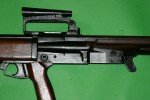
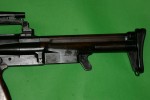
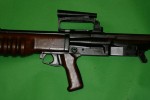
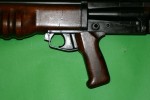
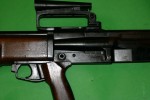


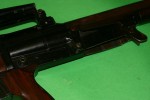
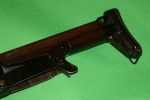
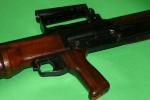







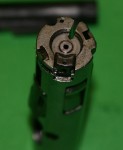
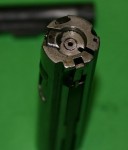
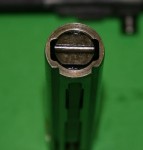









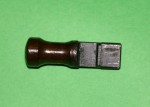
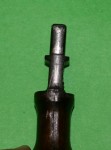
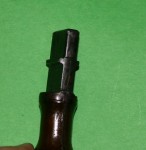
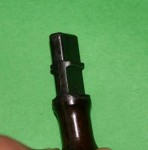
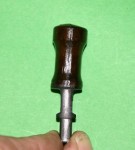





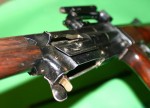
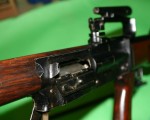

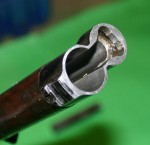

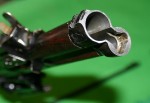

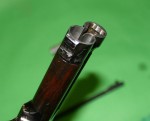

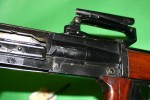
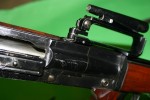
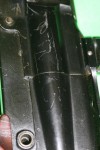
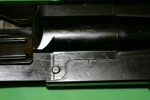
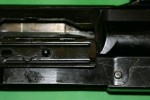
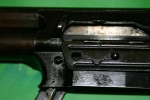


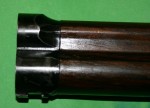
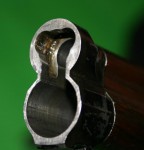




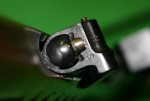
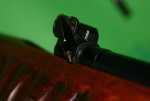
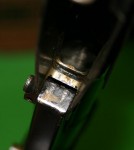
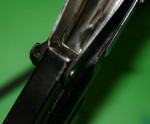
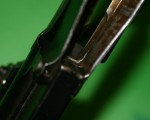
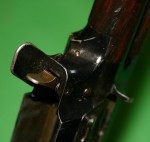
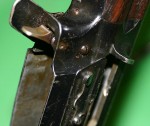
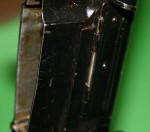
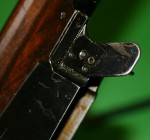
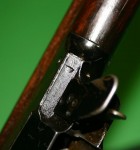
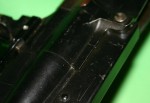

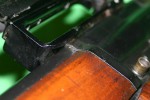


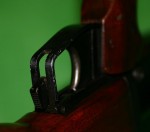

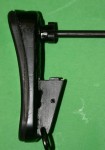

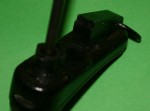
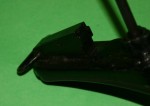

Damn shame about the rifle and more so about the cartridge. I love the 308 but the 280 brit would have solved the combat rifle issue we still are trying to solve.
Unfortunately, the morons in the Pentagon insisted that a full-power cartridge was needed, and flat-out lied about what the combat data from WW2 showed in order to get their way. And the rest of NATO went along, despite knowing the US Army was being stupid.
Actually if you look at the M-14 it’s right in line with American cars at the time, lots of power, so easy to fix you stop noticing how often it goes wrong, very well made. and you know what they say about power – better to have it and not need it that need it and have a 5.56.
Exactly, not to have introduced the British .270 and .280 just because it was British was madness and as you mentioned today after spending hundreds of millions of dollars the US still hadn’t discovered a better calibre . :-/
This is great i was doing so much research on The EM2 finding old pics and just external ones but i stumbled on this and my mind exploded with joy thank you and how did you get a hands on with the EM2?
I’m glad it was useful info! As for where we got it…a gentleman never tells. 😉
I was looking how you do working replicas do you think you could do one for the EM2? This would be brilliant (I might buy a deactivated one) Yes UK law is Very restrictive. Thanks
A reproduction EM2 isn’t on our list right now, but if there is enough interest in them we would consider it in the future.
What is the sight like? And what us that lever at the front of the cocking tube?
I would definitely buy a semi-auto reproduction in 6.5 Grendel or 7.62×39.
Chaz – if you’re referring to the left side of the gas regulator, that’s a flip-up backup sight post. Can’t answer what the sight picture looks like as I’ve never had the opportunity to see for myself – we have an EM-2 at the museum I volunteer at, but it only comes off display when absolutely necessary. Next time it does and I’m around, I’ll definitely try and get some photos though.
Thank you. My terminology with the EM-2 isnt the best. Where is this museum. and Can you tell me if there is a place in the UK I could see one?
It’s in Lithgow, Australia. I would assume there would be EM-2s in the UK, but I’m not sure where.
I did see one on display at the School of Infantry in Warminster. They had a rather nice collection of small arms in the museum on site, though I’m not sure it was open to the public; there is no harm in asking though.
The EM2 is my personal favorite and would love to see it make a come back.
Yes, they have a very nice collection. We did have the opportunity to take a looks at it – the EM2 is one of a number of very interesting prototypes they have.
I’m a new guy on this conversation, but is there any reason why the sight picture on the EM-2 and the EM-1 should be different? The sights appear similar to me, and the EM-1 sight picture is published in the EM-1 manual.
That might be very true. I dont see why not.
Hello, I’d be very interested in an EM-2 replica. I’m a Corporal in the British Army Cadets so I know how the SA80 works, but I’ve always been fascinated by this weapon. I’ve never seen so many pictures of it before!
The sight has a downward pointer which gives a very clear picture even in poor light and is particularly good at picking out objects (such as helmet) showing above cover.
Although the EM-2 was an advanced design with an excellent intermediate cartridge, in reality it was not really ready for service. It wasa nightmare to strip with a very complicated bolt with many small parts.
i have shot a couple of different EM-2 rifles in different calibres and they perform well on the range, but in combat…??
Regards
TonyE
‘Ello. If replica EM-2s were to be made, I would also be very interested in purchasing one or two. I’ve always fancied owning one. There’s just something about it; maybe it’s a mixture of old/new designs to it.
And if you don’t decide on creating replicas, I don’t suppose I could be sent a copy of the machinists specs/designs?
– Dash
Hello forgotten weapons, I was seeing all the support for a EM-2 replica. I was wondering if you would be interested in making a small batch. Maybe 5? Thanks.
The bolt and receiver for the EM2 are both nightmares to manufacture – not something we have any plans to do. Sorry!
Who can make photo thre the EM-2 scope?
If you look in the manual, there is a picture of the reticule.
Thank you! But I need real photo thru the scope…(((
Thanks for putting the video up – wonderful to see one actually firing.
Excellent video. May I ask if this was shot in the US? Amazing to believe there is a EM2 in the NFA registry.
No, it wasn’t in the US – I don’t know if there are any EM-2 in the registry here.
could anyone get some blueprints that show the dimensions please?
Also ive heard rumors that a couple were issued for direct contact issues in case that would interest anyone!
Please add me onto the list of those who would like to obtain a replica. In addition to those listed above I am in awe of the pictures you have. I’ve googled for years, and only ever came up with limited shots of the exterior.
Thnak-you
I was about six years old when the ‘new British rifle’, the EM 2, was cancelled. I heard all about it (or as much as a six year old could understand) from my older brothers and cousins, one of whom had tested the rifle during Army service. Some websites cite erroneous information or details, so tread carefully in your researches, chaps! One I came across said ‘Churchill over ruled his Defense Secretary (sic) Manny Shinwell’ and cancelled the gun just as it was about to enter full scale production. Shinwell was in another political party altogether and so far from Churchill’s politics you might as well say Noam Chomsky wrote Ronnie Reagan’s speeches … Thanks FW.com for all the detail I could wish for in my own research. N.B. Churchill (and just about everyone else) thought it highly likely Stalin would push forward in western Europe, as unlikely as that seems to us now. He believed if Stalin was to be resisted in any such move, then ‘commonality’ of arms would be critical cross the national boundaries. For the U.K. to go its own way at that time was not an option he could support in the light of U.S. refusal. Short sighted. In Korea and Vietnam use of this versatile weapon would have been ‘interesting’. It’s ironic that today many are finally coming round to the .280 (6.8 mm) design.
Barry,there had been an election. Shinwell was the defence minister of the previous govt. Churchill was the Prime Minister of the new Conservative government Churchill usually deferred to the Americans although his reasoning of a common cartridge does have some logic.
I’d be up for buying a EM2 replica in 6.8 SPC
As a reproduction goes, manufacturing a lookalike stock for a 10/22 wouldnt be that difficult, but would of course just ‘look’ the same
Some years ago, I had the opportunity to handle an EM 2 ( and an EM 1 ) at the “Pattern Rooms” when it was located in Nottingham , England. I believe that this Pattern Room collection is now held at the Leeds Armouries Museum, but I don’t think it is currently open to inpection ( even by arrangement )
Both these bullpups were nicely balanced with good ergonomics ( much better than the SA80 ).
However the optical sight on the EM2 was very poor. On the example I handled, the optics had yellowed with age and the sight picture was cloudy. Possibly with a modern combat type scope it would be much better.
Yes, the collection is now at the NFC at Leeds, and is open to visits by arrangement – I went there myself a couple years ago.
Ian,
That’s great news if we are again able to inspect the Pattern Rooms Collection. Will they still let you handle the merchandise with white gloves on ?
Yup, and take photos too.
can you describe or point me to a description of how the firing pin/sear set up works?
Saw you fire this on youtube. Must have been a pleasure to shoot
Given relative scale from photography, could you not take a few measurements at the Leeds museum in order to build up a CAD/CAM spec? CNC laughs in the face of complexity.
CNC is an amazing tool, but not magic. Even with modern machinery it is a ton of work and expense to produce something as complex as an EM-2. That said, Chuck at GunLab.net does plan to make them. 🙂
My father was part of an all-Polish design team which developed this weapon. They were employed by the Ministry of Supply and based at the Drill Hall, Cheshunt in Hertfordshire. I’ve still got one of his notebooks somewhere, full of formulae and mystifying ballistics calculations.
If you ever have an opportunity to scan that notebook, I would love to have a copy of it!
I’ll try and locate it. It was an M.O.S. exercise book if I remember correctly. I have no idea whether its contents relate to any particular weapon they worked on, or what. It may be in Polish, I don’t remember.
Some diligent researcher ought to locate any living relatives of those Polish design teams to try and establish the true record of what those men actually produced. My father said they were discharged around 1949 (replaced by British designers apparently) coz he was pretty upset about that, not that he ever really let on about anything to do with his wartime work. I’ve got some photos of them in their design office at Cheshunt Drill Hall and probably some names as well, so that would be a start.
Hi Paul, I’ve been writing a Masters dissertation on the EM2 and the British light rifle programme of the 1950s. I definitely agree research into the Polish Armament Design Department/Establishment team needs to be made. I have a feeling it would be a fascinating story – how they managed to reach the UK and the work they did. I know that Stefan Janson remained at the ADE and was later commissioned into the Royal Artillery (Territorial Army) as a Captain, before he left for the US some years later. A little is written about Roman Korsac too, with whom Janson worked closely on the EM-1 LMG.
It would be great to hear more about your father and it would be fascinating to find out what happened to the rest of the Polish design team.
Hello Matt, sadly these men must have all passed on, my own father dying in the 1980s. Briefly, after escaping from Bolshevik capture in 1939 and later again released from internment in Hungary (caught with concealed weapons drawings!), he ended up in London, via another brief period of internment at Scapa Flow, as a member of the general staff, Polish Army, Military Technical Institute based in Stanhope Place W1. He spent most of WW2 assigned to the Ministry of Supply as a weapons engineer/designer based at the RSA design office in Cheshunt. This was the oft-mentioned, all-Polish design team that, I’m told, worked on the Sten gun and later the EM2. I think his own speciality was reloading mechanisms utilising escape gases. One point of entry research-wise, I suggest, if you do delve further, would be the Patent Office. I saw a paper once with his and colleagues’ names on a patent application so whatever they were up must have been of a development nature. This team worked together through to the end of the 1940s/1950 when the Poles were eventually disbanded and replaced by British engineers. If you look at Dugelby’s work, next to nothing is actually documented about the precise design process behind the EM2, who did what, when and so on. It doesn’t describe any of the work or set up at the Cheshunt office. It simply states that Janson set to work with his Polish team and up they came with the EM2 design. An impression I obtained from my father was the lack of interface with actual weapon testing. It seemed the Polish designers were largely kept away from the actual testing side although on a personal level they had very relevant hands-on weapons experience themselves. My father’s own fighting experience hugely aided his thinking on weapon design. I remember him once describing some ideas he had for a one-man operated anti-tank weapon after his observations of Russian tanks in the field at the Eastern front. The EM2 was only ever a development phase and with continuing development over time might have turned out as another British masterpiece.
Hope this provides some further encouragement for your own work. Best wishes, Paul.
Hi Paul, thanks for replying! It sounds like your father had a fascinating story, I expect most of the men he worked with did too. The patent office would be a good starting place, I believe the National Army museum would be helpful in retrieving service records as well. You’re quite right about Dugelby’s work, it does lack in some key areas – hopefully some research will give insight into how the Polish team and the rest of the Armaments Design Establishment worked. It’s very likely your father also worked on Roman Korsac’s EM1 LMG. Your father’s story sounds a lot like Janson’s I believe he escaped through Hungary after seeing action with Polish Army Anti-Aircraft batteries. Would love to speak to you more about your father and his work, I hope you’ll drop me a line at historicalfirearms@gmail.com
Best,
Matt
Hi Paul, thanks for replying! It sounds like your father had a fascinating story, I expect most of the men he worked with did too. The patent office would be a good starting place, I believe the National Army museum would be helpful in retrieving service records as well. You’re quite right about Dugelby’s work, it does lack in some key areas – hopefully some research will give insight into how the Polish team and the rest of the Armaments Design Establishment worked. It’s very likely your father also worked on Roman Korsac’s EM1 LMG. Your father’s story sounds a lot like Janson’s I believe he escaped through Hungary after seeing action with Polish Army Anti-Aircraft batteries. Would love to speak to you more about your father and his work, I hope you’ll drop me a line at historicalfirearms@gmail.com
Best,
Matt
Just seen this website, very interesting articles indeed !
1. The video of the EM2 was filmed at a secret facility in the UK. The weapon filmed is a 7.62x51mm model. We have it’s twin sister in .280 (they were both acquired from the same source some years ago).
2. The small arms museum in Warminster is undergoing refurbishment. It may or may not re-open. It used to be open to the public by prior arrangement prior to refurbishment.
A great thread on a little known subject, well done. The manual is certainly useful to us, thanks.
The more I read about this weapon the more I realise how advanced it was for the time, incredible! I’d love a reproduction, seriously.
So, is there plans out there for a reproduction EM-2? I would be incredibly interested.
Hi Ian,
Great video… if I may, just 1 one thing to point out from a former British serviceman.
The R you stated as standing for ‘rapid’ is incorrect, the terminology in our forces is ‘repetition’ referring to fully automatic.
Not trying to be ‘that guy’, just thought you might appreciate something like that.
As a amateur living military historian, I find weapons like this have been left out from the vast majority of the history books, making them truly forgotten weapons. Part of my role in the group I am currently in is to research possible additions to our armoury, and the group have unanimously decided to go for the EM-2. I’m looking at trying to obtain an EM-2 as either:
Deactivated
9x19mm Blank firing (top venting)
cap firing (top venting)
If anyone who has access to the blueprints could get back to me that would be great and most appreciated, as a rough estimate of units required is 12, with the possibility to go up to a maximum of 32.
Ian, you note a somewhat complex design of the rifle. I understand that the politics of COL Sudler demanding the 7.62 cartridge and an indigenously produced battle rifle probably doomed any chance of U.S. adoption of the EM-2, but could costs of production also have contributed? Specifically, do you happen to know the estimated unit costs of the EM-2 versus the FN FAL, M14, or G3?
Is the front sling mount also the triangle variant? I’m trying to make a wooden prop EM2. Also, thanks for the manual as it is really useful. Shame the bayonet stuff is missing.